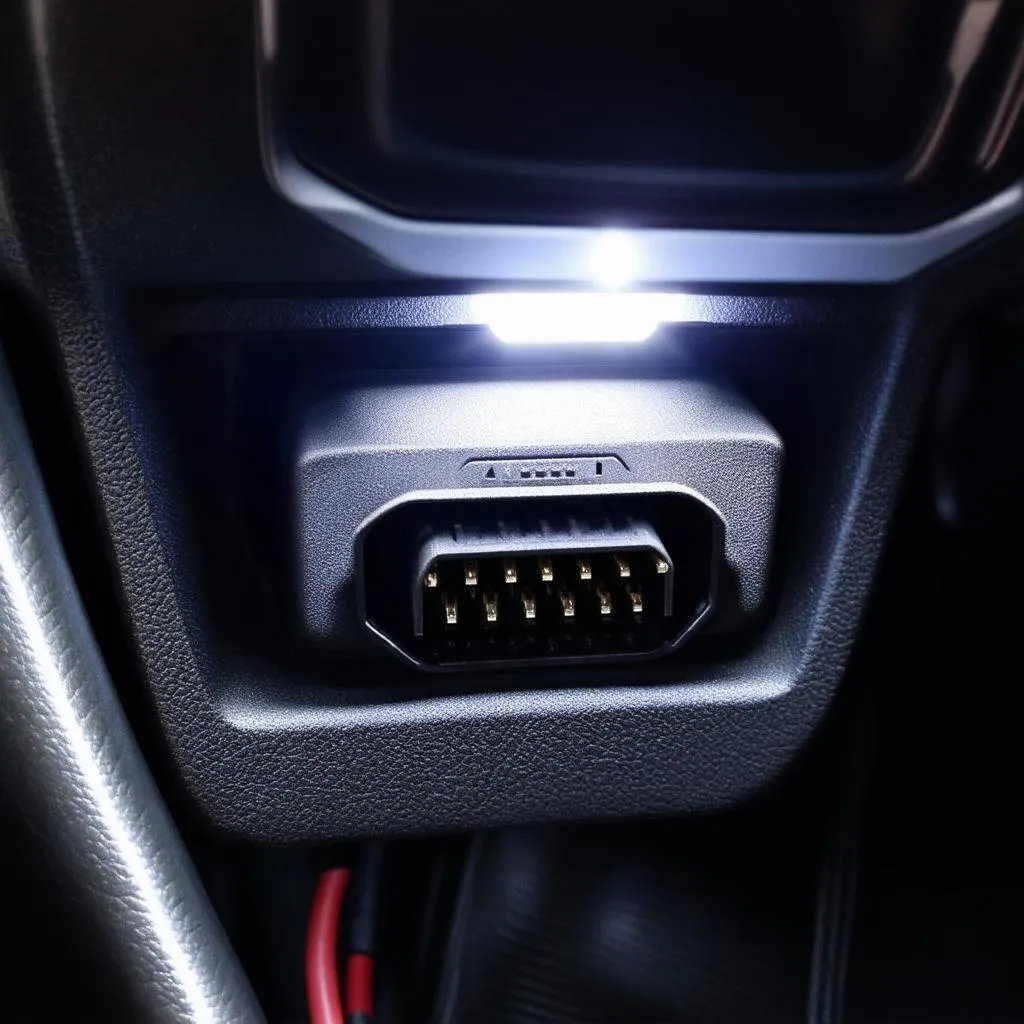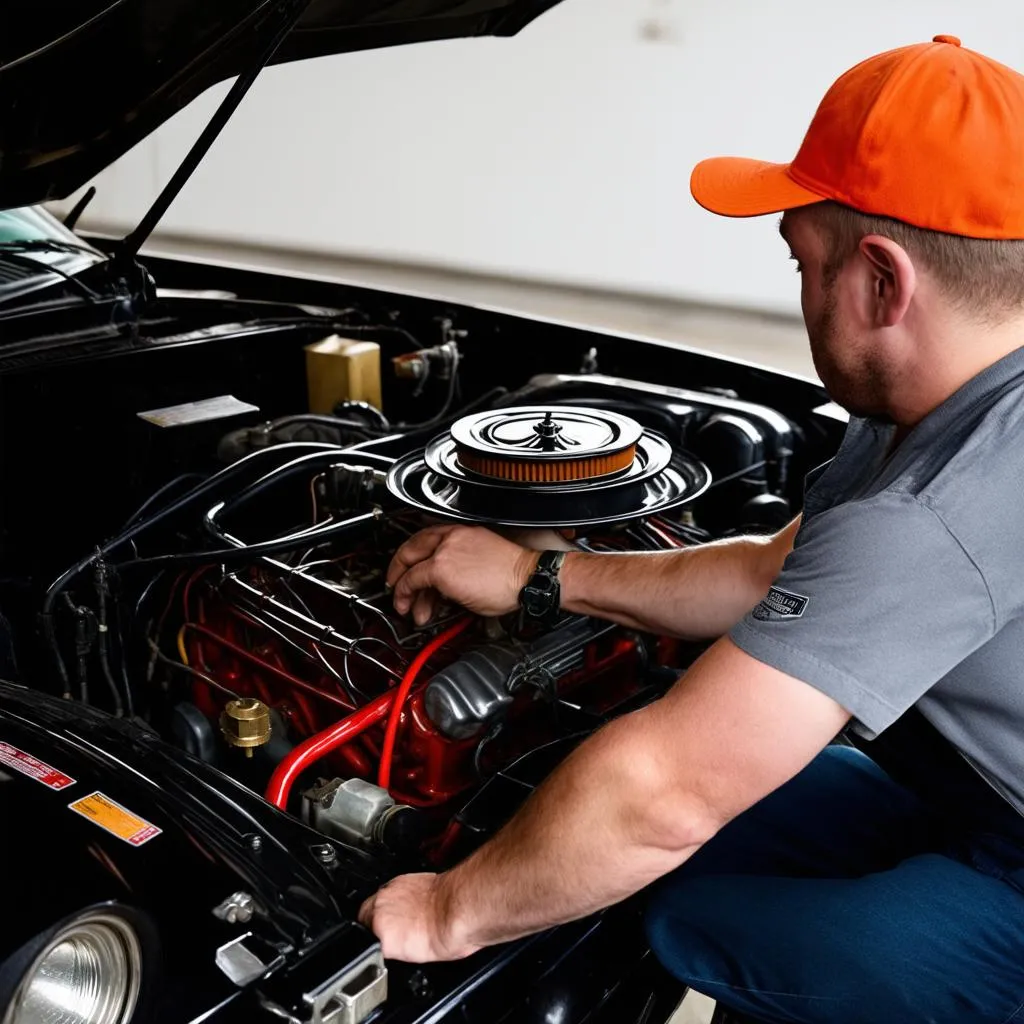You’re tinkering under the hood of your trusty 1994 Ford Mustang, a classic beauty you’ve been restoring for months. You’re hoping to diagnose a pesky engine issue and you’ve heard about these magical “OBD scanners.” But then, doubt creeps in. Do cars as “vintage” as your beloved Mustang even HAVE these mysterious OBD slots?
Relax, fellow gearhead, you’re not alone! The world of onboard diagnostics can be a bit confusing, especially when dealing with older vehicles. This article is here to guide you through the ins and outs of OBD, unravel its history, and answer that burning question: does your older car have an OBD slot?
Decoding the Mystery: What Exactly IS an OBD Slot?
Before we delve into the history books, let’s clarify what an OBD slot actually is. Imagine your car has a secret language it uses to communicate its health. The OBD-II port (On-Board Diagnostics, second generation) is like the translator, a standardized 16-pin connector usually found under the driver’s side dashboard. This port allows a mechanic or a handy DIYer like yourself to connect a scan tool (the “dictionary”) and read the car’s error codes, like deciphering a secret code to pinpoint issues.
A Blast from the Past: The Evolution of OBD
OBD wasn’t always so standardized and user-friendly. It’s gone through quite the evolution over the years:
- The Early Days (Pre-1980s): Imagine a mechanic armed with nothing but experience and intuition, diagnosing car problems by ear and feel. Early car systems were rudimentary, and diagnosing issues was often a matter of trial and error.
- The First Spark of OBD (1980s): As cars became more computerized, manufacturers started implementing basic onboard diagnostic systems. However, each brand had its own proprietary connectors and codes, making it a headache for mechanics.
- OBD-II Takes the Stage (1996): Enter the era of standardization! In 1996, the OBD-II standard was mandated in the US for all new light-duty vehicles. This game-changer introduced a universal connector and standardized diagnostic trouble codes (DTCs), making diagnostics significantly easier.
So, Does YOUR Older Car Have an OBD-II Slot?
Here’s the crux of the matter:
- 1996 and Beyond: If your car was manufactured in 1996 or later (in the US), you’re in luck! It almost certainly has an OBD-II port.
- Pre-1996: For vehicles made before 1996, it gets a bit trickier. Some manufacturers started incorporating OBD-II systems earlier, while others stuck with their own systems.
How to Find Out:
- Check Your Owner’s Manual: The most reliable source is your car’s manual. Look for information about “onboard diagnostics” or “OBD.”
- Visual Inspection: Take a peek under your dashboard, especially on the driver’s side. Look for a 16-pin connector that resembles a trapezoid.
- Online Resources: Websites and forums dedicated to your car model can be treasure troves of information.
Common Concerns About Older Cars and OBD:
- “My car is from the ’80s. It has a diagnostic connector, but it doesn’t look like the standard OBD-II port!” This is common. Many cars from this era had rudimentary onboard diagnostics but used manufacturer-specific connectors. You might need an adapter or a specialized scan tool to read the codes.
- “I found the OBD-II port, but the scanner isn’t reading anything!” Sometimes, older OBD-II systems might not communicate properly with modern scan tools due to software incompatibilities.
Need Help Deciphering Your Car’s Codes?
Dealing with car diagnostics can be daunting, especially with older models. Don’t hesitate to reach out for help! Our team of automotive experts is here to assist you. Contact us on WhatsApp at +84767531508 for support with diagnostic tools and troubleshooting. We offer 24/7 assistance to get you back on the road!
 OBD Port Location
OBD Port Location
 Vintage Car Engine
Vintage Car Engine
Remember, understanding your car’s diagnostic system is key to keeping it running smoothly. Happy driving!